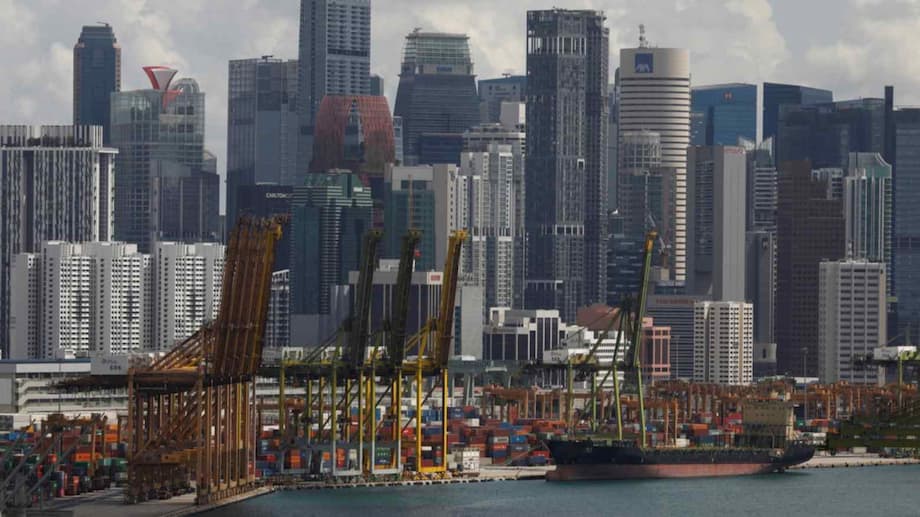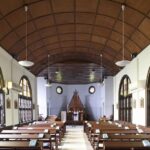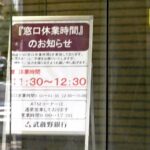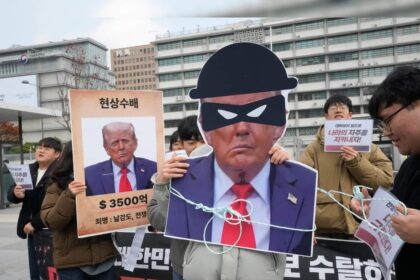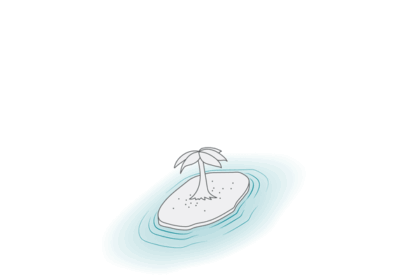Why Singapore is revisiting nuclear options now
Singapore is taking a fresh look at nuclear energy as it seeks to cut its heavy dependence on imported natural gas and hit net zero emissions by 2050. More than 90 percent of the city state’s electricity is generated from natural gas. That concentration has delivered reliability for years, yet it leaves the grid exposed to global fuel price swings and supply risks. Leaders are now studying whether a new generation of compact nuclear systems, called small modular reactors, could provide steady low carbon power in a safe and affordable way.
- Why Singapore is revisiting nuclear options now
- What the government is studying
- How small modular reactors work
- Could floating nuclear plants suit a city shaped by the sea
- Safety, regulation, and public trust
- Integrating nuclear into a cleaner grid
- Regional developments and cooperation
- Timelines, site options, and what to watch
- What to Know
Local geography shapes the debate. The United Nations has long regarded Singapore as alternative energy disadvantaged because of limited wind, lack of rivers for hydropower and scarce land for utility scale renewables. Solar sits at the center of the domestic plan but available roof space, cloud cover and grid constraints limit how much it can supply. Academic modeling suggests solar could meet roughly 2 to 6 percent of power demand by 2030 and potentially 3.5 to 8 percent by 2040 if technology, space use and policy support keep improving. Imports of low carbon electricity are planned to reach around 30 percent of supply by 2035, and the government is also studying the role of hydrogen later in the transition.
These realities help explain why nuclear has moved from the margins of policy discussion to an active area of research. Officials have stressed that no decision has been made to build a plant. The stated aim is to keep options open, deepen expertise and assess whether modern designs could meet Singapore’s unique safety, reliability and cost tests. If the technology proves viable, analysts at the Energy Market Authority have suggested nuclear could account for about 10 percent of electricity by mid century.
What the government is studying
Singapore’s Energy Market Authority has commissioned a detailed study of advanced nuclear technologies, including small modular reactors, to evaluate their safety performance, technical feasibility and commercial readiness in the local context. The consultancy Mott MacDonald was appointed to conduct the assessment after a tender launched in late 2024. Regulators and policymakers want a clear view of which designs are closest to deployment, what site conditions they require, and how they would integrate with Singapore’s grid and industrial base. Any path forward would need to satisfy stringent criteria on safety, reliability, affordability and environmental sustainability. A summary of the study’s scope is available from the industry outlet Nuclear Engineering International, which reported on the appointment and upcoming work by the Energy Market Authority here.
International cooperation has deepened alongside local research. In August 2024 Singapore and the United States signed a civil nuclear cooperation pact, often called a 123 Agreement, that will remain in force for 30 years. It facilitates collaboration on safety, safeguards, and the development of advanced nuclear energy technologies, including small modular reactors. The pact builds on years of capacity building between the United States Nuclear Regulatory Commission and Singapore’s National Environment Agency, which have held joint safety workshops and technical exchanges.
At the Singapore International Energy Week in late 2024, Deputy Prime Minister Gan Kim Yong said Singapore would publish a Future Grid Capabilities Roadmap to address new complexities on both the supply and demand side as more clean energy enters the system. The Energy Market Authority previewed three focus areas: using distributed energy resources such as rooftop solar, batteries and electric vehicle chargers to support grid stability, improving grid planning and operations through digital tools like a grid digital twin, and maintaining stable power quality as the share of variable renewables and imports grows. S&P Global Commodity Insights covered the roadmap announcement and Singapore’s broader nuclear capability push here.
Building expertise and a safety culture
Singapore has expanded its nuclear research capabilities. The Singapore Nuclear Research and Safety Institute was launched at the National University of Singapore with a new S$66 million grant and a mandate to double its expert pool by 2030. The institute is studying accident simulations for advanced reactors, nuclear waste management, underground reactor concepts, radioactive particle dispersion and radiation effects on health. Officials say more than S$150 million has been invested in nuclear research and talent development since 2014. The Straits Times reported on the institute’s funding, facilities and research priorities here.
Ties with the International Atomic Energy Agency continue to strengthen. Rafael Mariano Grossi, the IAEA Director General, has said Singapore’s research base, institutional maturity and limited room for large renewables make it a strong candidate to consider nuclear energy. He also noted the country’s long standing role in nuclear science training and its membership in the agency since 1967. He highlighted that planning for waste management needs to begin at the start of any program and suggested that Singapore could even explore a joint plant with a neighbor, similar to arrangements in parts of Europe. The National University of Singapore summarized his remarks and the city state’s collaboration with the IAEA here.
How small modular reactors work
Small modular reactors are nuclear power plants that produce up to about 300 megawatts of electricity per unit. They are designed to be built in factories, shipped as modules and assembled on site. The compact size reduces the land footprint, a key advantage in a dense city. Several designs use enhanced safety features, including passive cooling that can remove heat without external power or operator action, and simpler systems that reduce the number of pumps and valves that must be maintained.
Not all small modular reactors are the same. Some use a familiar pressurized water approach that is similar to most operating reactors worldwide, while others are based on high temperature gas or molten salt concepts that promise higher efficiency or even co production of industrial heat. Many designs remain in the licensing or demonstration stage. That is why Singapore’s current effort is focused on technology maturity, real world performance and the supply chains that would support construction, fuel, operation and maintenance over decades.
For a grid the size of Singapore’s, a handful of modules could supply a constant block of clean electricity that does not depend on weather conditions. Analysis by the Energy Market Authority indicates that nuclear energy could supply about 10 percent of national demand by 2050 if a safe, cost effective design is identified. Nuclear would join solar, electricity imports and, over time, low carbon hydrogen as pillars of a diversified energy mix.
Could floating nuclear plants suit a city shaped by the sea
One idea that has gained attention is the use of floating small modular reactors moored off the coast. These plants are built in shipyards, towed to their site and connected to the grid by subsea cables. For Singapore, a maritime nation with deep engineering and port expertise, a floating option could offer practical advantages, including faster deployment and the ability to bring a fully assembled unit to a site without extensive onshore construction.
Water cooling is efficient in the tropics and the surrounding sea can act as a large heat sink. A floating plant would still require careful marine works such as breakwaters and anchoring systems, as well as robust connections to the grid. Maintenance, refueling and eventual decommissioning could be handled in a shipyard setting, potentially shortening outages compared with land sites. Channel NewsAsia explored the trade offs between floating and land based options, citing global experience from Russia’s Akademik Lomonosov and the early wave of small reactor projects in China and elsewhere. Its expert commentary can be found here.
Floating reactors also pose challenges. Marine conditions increase corrosion risk and demand more frequent inspection regimes. Seawater intakes need strong filtration to protect equipment and the environment. Storm protection, cybersecurity, and safeguards to prevent unauthorized access would require layers of defense overseen by both maritime and nuclear authorities. Cost outcomes remain uncertain for first of a kind projects, whether on land or at sea, so careful affordability studies are part of the due diligence.
Safety, regulation, and public trust
Safety is the first filter for any nuclear option in Singapore. The IAEA supports countries that are assessing nuclear power through a phased milestones process that covers legal frameworks, independent regulation, emergency preparedness and operating culture. Newcomers face additional tasks, such as ensuring sufficient grid capacity and building a pool of experts who can evaluate designs, oversee licensing and manage operations. Singapore’s target to grow about 100 nuclear safety experts over time is intended to build that foundation.
Research at the Singapore Nuclear Research and Safety Institute includes modeling how radioactive particles would disperse in local weather conditions and how ecosystems and people might be affected by low dose exposures. The National Environment Agency continuously monitors radiation levels and is upgrading coastal systems that can detect radioactivity carried by currents. These measures aim to give authorities better situational awareness and faster detection if any abnormal readings occur in the region.
Public acceptance also depends on trust and clear communication. A study of emergency preparedness message framing with Singapore participants found that messages centered on care increased trust in government more effectively than messages centered solely on competence or control. Traditional media performed better than social platforms in building trust. That research suggests that how authorities communicate safety and preparedness can shape how citizens weigh nuclear risks and benefits.
Officials have repeatedly stressed that the government is still studying the option. The Energy Market Authority framed its position as a pragmatic choice to stay informed while the technology evolves.
“While Singapore has not made a decision on nuclear energy, it is important to keep our options open and stay informed about promising solutions.”
The approach reflects Singapore’s emphasis on long term planning, risk management and building capacity before any major decision.
Integrating nuclear into a cleaner grid
Modern grids must manage rising solar output during the day, declining output when clouds roll in, and evening peaks as homes and workplaces draw more power. The Future Grid Capabilities Roadmap focuses on three areas that match these challenges. First, it seeks to use distributed resources like rooftop solar, batteries and smart electric vehicle chargers to provide balancing services and shift demand away from peak hours. Second, it promotes digital operations, including a grid digital twin to plan investments and manage assets more efficiently. Third, it evaluates solutions that keep voltage and frequency stable as more renewables and cross border imports enter the mix.
A small nuclear unit would inject steady electricity into this system, which reduces the amount of gas needed to cover baseload demand and complements solar and batteries. Nuclear plants can follow load to a degree, and small modular units can be planned in steps that match demand growth. Imports and future hydrogen supply could add flexibility later, although timelines and costs for hydrogen remain uncertain. Policymakers will weigh these choices against the price and carbon benefits of each option.
Affordability is central. First of a kind small modular projects in several countries have faced delays and cost increases. Singapore’s study is looking for mature designs with verifiable performance records. A clear financing plan would be needed, along with supply chains for fuel and components that satisfy safety, security and nonproliferation rules. Carbon pricing and international green financing could help close cost gaps if the technology meets national needs.
Regional developments and cooperation
Across Southeast Asia, interest in small modular reactors is growing. Indonesia has approved the site evaluation plan for a first project by Thorcon, a Singapore based developer working on a molten salt reactor concept that could be built in a shipyard and barged to site. The Indonesian government has set an ambition to add nuclear power by 2040 as it seeks alternatives to coal. Thorcon’s progress illustrates how supply chains and regulatory experience in the region could grow in the coming years. A summary of Indonesia’s licensing step is available here.
Singapore has also expanded energy ties with India, and the two countries agreed to explore collaboration on small modular reactor technologies as part of a broader economic roadmap that covers trade and defense. Working with partners across the Indo Pacific may give Singapore access to diverse expertise, safety benchmarks and vendor options. Meanwhile, the World Nuclear Association notes that about 30 countries are at various stages of considering or starting nuclear programs, and that new entrants typically need to build grid capacity and regulatory infrastructure before they can host a plant.
Timelines, site options, and what to watch
No timeline has been set for a decision on nuclear power in Singapore. The current phase is about analysis, capability building and cooperation with experienced partners. If the government concludes that a specific technology can be deployed safely and cost effectively, it would still face detailed licensing, environmental assessment, public consultation and contracting steps. Those processes take time by design.
On siting, several possibilities are under study. Land based installations would need to be located with careful attention to population density, exclusion zones and access to reliable cooling. Researchers are also evaluating the practicality of underground configurations, which could enhance security and reduce land use. A floating plant would require deep enough water, robust moorings and minimal impact on marine ecosystems and shipping lanes. Any of these options would undergo detailed environmental impact assessments and safety reviews before approval.
Waste management plans would be established from the outset. Nuclear plants produce small volumes of high activity waste compared with other industrial processes, yet safe handling, interim storage and eventual disposal require clear policy choices, technical facilities and international best practices. Singapore’s researchers are participating in global programs on waste and are building expertise in monitoring and modeling.
Several signposts will show progress. These include the outcome of the Energy Market Authority’s feasibility study, further details on the Future Grid Capabilities Roadmap, the growth of the local expert pool at the Singapore Nuclear Research and Safety Institute, and continued work with the IAEA and partner countries. Regional developments in Indonesia and elsewhere will add real world data points on the performance of advanced reactor designs that are relevant to island or coastal settings.
What to Know
- Singapore is studying nuclear energy to reduce its heavy reliance on natural gas and to meet net zero goals by 2050.
- The Energy Market Authority appointed Mott MacDonald to assess the safety and feasibility of advanced nuclear technologies, including small modular reactors.
- Singapore signed a 30 year civil nuclear cooperation pact with the United States in 2024, strengthening collaboration on safety and advanced technologies.
- A new Singapore Nuclear Research and Safety Institute was launched at NUS with S$66 million in funding and aims to double its expert pool to about 100 by 2030.
- IAEA chief Rafael Grossi has said Singapore’s strong research base and limited land for renewables make it a good candidate to consider nuclear energy.
- The Energy Market Authority says Singapore has not decided to build a plant and is keeping options open while evaluating promising solutions.
- EMA analysis suggests nuclear could provide around 10 percent of electricity by 2050 if a suitable design is identified.
- The Future Grid Capabilities Roadmap targets distributed energy resources, a grid digital twin and solutions that keep supplies stable as renewables and imports grow.
- Solar remains the main domestic renewable, with a 2 GWp target by 2030, while electricity imports and hydrogen are being developed as complementary low carbon options.
- Floating and land based small modular reactors are under consideration, each with distinct safety, cost and regulatory challenges.
- Regional momentum is building, including Indonesia’s licensing step for a first project and India Singapore plans to explore collaboration on small modular reactors.


